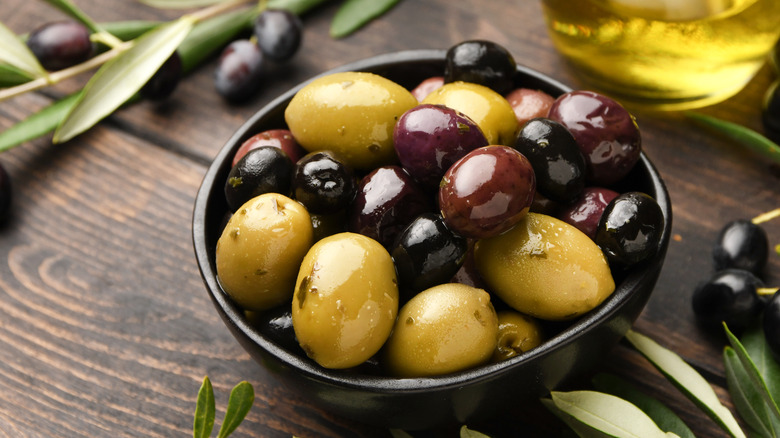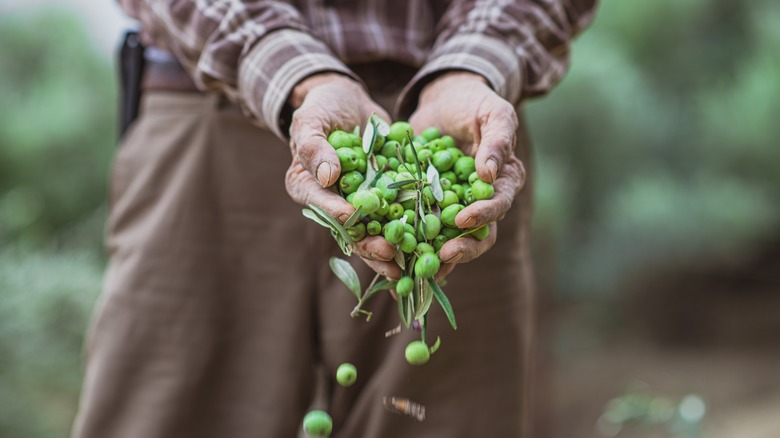Here's Why You Should Avoid Lye-Cured Olives
There are so many different types of olives, and every variety has its own mix of salty, funky, bitter, umami, and sour flavors at work. It's why we want to snack on olives alone, grind them into tapenades, garnish martinis with them, top panzanella salads with kalamatas, and upgrade charcuterie boards with castelvetranos. But imagine if all of those signature olive flavors were gone. What if they were bland, or worse, had a chemical-tasting character? That's what can happen when olives are cured in lye.
Olives are cured to remove bitterness. Yes, some bitterness is good and what we love about olives, but when they are harvested, they have a phenolic compound called oleuropein that's harshly bitter in an unpleasant way. Curing removes this by converting olives' sugars into lactic acid and stripping out the oleuropein and any other unwanted compounds, leaving only desirable bitterness.
There are five major ways olives can be cured, and lye is the one you want to avoid. Commercial producers use lye, or sodium hydroxide, because it cures more quickly than other methods, and it's cheap. It can remove negative flavors in just days, compared to other processes' weeks or months. So, it's easy to see why lye is still used — unfortunately, it doesn't seem to stop at removing the bad flavors. Lye is known to strip out all of olives' good flavors, too, and even leave an unpleasant taste. Flavorless olives with lingering chemical notes? No, thanks.
Other ways olives are cured
So, what ways are olives cured that successfully remove the subpar flavors and leave all the good ones that make us love these little fruits? The more common methods are brine-curing and dry-curing. For brine-curing, ripe olives go into salt water and are gradually fermented over the course of a year. Salt is known to block bitterness and amplify other tastes, like sweetness, so this method really plays up all of olives' complex flavors. For dry-curing, the olives are packed into salt and rest there for a month, sometimes ending in an olive oil wash for juiciness. Thanks to the salt, this has a similar effect as brine-curing: restrained bitterness and bold flavors.
Less frequently, producers cure olives in simple water, but this is actually the slowest, most time-consuming path of all five, because the rinse has to be done over and over again. And even more rarely, olives are just left to ferment and dry in the sun, either after they've been picked or even when they're still on the vine. This is called sun- or air-curing. It would be a treat to find olives that have been water- or sun-cured, but brine- or salt-cured olives are just as delicious and always deliver on their olive-ness. If you have the sad experience of biting into a blah, even chemical-tinged olive, you can guess it's been lye-cured.

